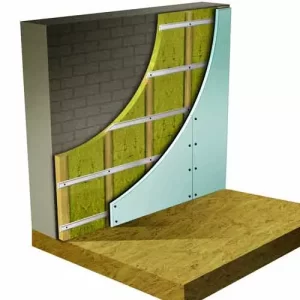What is Acoustic Treatment. Understanding the Basics
Introduction
What is Acoustic Treatment: Understanding the Basics is an informative article that discusses the fundamental aspects of acoustic treatment. The article sheds light on the importance of acoustic treatment in various settings, from recording studios to home theaters. It explains how sound travels and interacts with different surfaces, leading to problems such as echo, reverberation, and unwanted noise.
The article further delves into the various types of acoustic panels and their effectiveness in addressing acoustic issues. It also highlights the crucial role of the room’s dimensions and the placement of acoustic treatment in achieving optimal sound quality. Understanding the Basics of Acoustic Treatment is vital for anyone working with sound, as it can significantly impact the quality of their work.
By implementing proper acoustic treatment methods, one can achieve a balanced, clear, and satisfying sound with minimal interference.
Basics of Acoustic Treatment
Acoustic treatment is a crucial aspect of creating an optimal sound environment for recording studios, home theaters, concert halls, and other spaces. In essence, acoustic treatment is the practice of manipulating and controlling sound reflections, reverberation, and other characteristics of sound waves in a room or space.
When discussing the basics of acoustic treatment, one must first understand the nature of sound waves and how they behave in different environments. Sound waves reflect, absorb, and bounce off different surfaces, which can create a range of problems, including echoes, standing waves, and distortion. Acoustic treatments aim to mitigate these problems through the use of specialized materials such as acoustic foam, diffusers, bass traps, and panels that absorb, scatter, and reflect sound waves.
One of the key benefits of acoustic treatment is the improvement of sound clarity and intelligibility. By reducing unwanted echoes and other acoustic distortions, it is easier for listeners to hear and understand speech, music, and other sounds. Acoustic treatment also helps to reduce external noise, making the environment more pleasant and comfortable to work and play in.
In conclusion, the basics of acoustic treatment involve manipulating and controlling sound waves in a room or space to improve sound clarity, reduce acoustic distortions, and create optimal listening and recording environments. Whether you are a sound engineer, musician, movie enthusiast, or simply someone looking to improve the acoustics of your living space, understanding what is acoustic treatment and its benefits is essential to achieving optimal sound quality.
The Science Behind Acoustic Treatment

Acoustic treatment is an essential element of any audio recording or playback system. It involves reducing or enhancing specific frequencies of sound to improve the overall sound quality. So, what is acoustic treatment? It’s the process of altering the acoustic properties of a space to optimize sound quality. If you have ever heard an echo in a room, then you know how important it is to control the sound in a given space.
The science behind acoustic treatment is based on understanding how sound waves behave in a specific environment. The goal of acoustic treatment is to minimize the reflections, echoes, and other unwanted sounds that can occur in a room. There are several ways to achieve this, including using absorptive materials, diffusers, and bass traps.
Absorptive materials, such as foam panels or acoustic curtains, are designed to absorb sound energy and prevent it from reflecting off walls, ceilings, or floors. Diffusers, on the other hand, help to scatter sound waves, spreading them in different directions and preventing them from causing echoes. Bass traps are used to control low-frequency sound waves, which tend to accumulate in corners and other small spaces.
When acoustic treatment is done correctly, the result is a room that sounds balanced and natural. Whether you are recording music or just enjoying your favorite movies, the sound quality can make a massive difference in your overall experience. Understanding the science behind acoustic treatment can help you make the right decisions when it comes to optimizing your space. By using the right materials and techniques, you can achieve a sound that is clear, natural and that will enhance your audio experience.
Benefits of Acoustic Treatment
Acoustic treatment is a process of soundproofing and enhancing acoustics in a space by absorbing, diffusing or reflecting sound waves using specialized materials. What is acoustic treatment? It is a technique that offers several benefits for both commercial and residential settings. Firstly, it improves sound quality by reducing echoes and reverberations, which can make speech, music or other sounds clearer and more pleasant to the ear. This can be particularly important in recording studios, home theaters, auditoriums and conference rooms, where clear communication is crucial.
Secondly, acoustic treatment can also improve the overall comfort level of a space by reducing noise pollution from outside or within the building. This can help create a more serene environment, making it easier for people to concentrate and relax. Moreover, it can also prevent sound from bleeding into adjacent areas, reducing noise disturbance for others, and creating privacy for the occupants.
Finally, acoustic treatment can also improve health and safety. Prolonged exposure to high levels of noise can lead to permanent hearing damage, and it is vital to take steps to minimize any such risks. Acoustic treatment absorbs sound before it gets reflected, thereby reducing the overall noise levels in a space. This can make the environment more comfortable while also promoting hearing health.
In conclusion, acoustic treatment offers several benefits, including improving the sound quality, creating a more comfortable environment, reducing noise pollution and promoting hearing safety. Whether it is for a home, a workplace, or a public venue, acoustic treatment is an essential technique that can improve the overall sound quality of a space, while providing a healthy and pleasant environment for its occupants.
Types of Acoustic Treatment Products

When we talk about sound quality, the role of acoustic treatment cannot be ignored. Acoustic treatment refers to the process of improving the sound quality of a space by reducing unwanted echoes, reverberations, and other flaws in the audio signal. This is achieved by using materials that absorb, diffuses or reflects sound waves.
There are several types of acoustic treatment materials available in the market, each having their unique properties. For example, fiberglass and mineral wool are known for their ability to absorb sound waves, while perforated panels and diffusers are used for sound diffusion. Additionally, foam tiles, curtains, and bass traps are also commonly used to treat different types of audio spaces.
The choice of material for acoustic treatment depends on the type of space, its dimensions, and the intended application. Some materials may be suitable for a recording studio or a home theatre, while others may be more effective in concert halls or lecture rooms.
Overall, effective acoustic treatment requires a combination of materials to absorb, diffuse, and reflect sound waves to create the desired acoustic environment. Understanding what is acoustic treatment and the types of acoustic treatment materials available can allow individuals to make informed decisions when selecting materials for their audio treatment needs.
Placement of Acoustic Treatment Products
Proper placement of acoustic treatment products is crucial to achieve the desired sound quality. To begin with, it is important to identify the source of the unwanted reflections and reverberations. This can be done by placing a mirror on the wall and looking for the reflection of the sound source. Once this is identified, acoustic products can be placed appropriately to absorb or diffuse the sound waves to prevent them from bouncing back and creating unwanted echoes.
For example, panels can be placed on the walls, ceiling, or corners of the room to absorb the sound waves. Bass traps can be installed in the corners to reduce the bass frequencies. Diffusers can be placed on the ceiling to scatter the sound waves and create a more natural sound. It is also important to ensure that the spacing between the products is optimal for maximum effectiveness.
In summary, acoustic treatment is the process of improving sound quality in a room by using products such as panels, diffusers, and bass traps. Proper placement of these products is crucial to achieve the desired sound quality. By following the steps above, you can improve the acoustics of your room and create a more enjoyable listening environment.
Conclusion – What is Acoustic Treatment
In conclusion, understanding what is acoustic treatment and its importance in various fields is crucial. Acoustic treatment refers to improving the sound quality of a given space by reducing unwanted echoes, resonances, and sounds. It involves the use of sound-absorbing panels, diffusers, and bass traps placed strategically to control sound waves’ reflection and absorption. The process is essential in recording studios, home theaters, classrooms, conference rooms, and other spaces where high-quality sound is necessary. Acoustic treatment results in sound clarity, improved speech intelligibility, enhanced productivity, and reduces distractions.
Moreover, poor sound quality can lead to hearing loss, stress, and reduced productivity. Thus, understanding what acoustic treatment is and its benefits is vital. It ensures that we create a conducive environment and protect our hearing ability. As technology continues to advance, sound pollution becomes a significant concern globally. Therefore, knowing how to alleviate sound pollution through acoustic treatment is crucial.
In summary, what is acoustic treatment? It refers to the process of improving sound quality by manipulating sound waves within a given space. The process involves the strategic placement of sound-absorbing materials and devices within a room. Acoustic treatment is essential in various environments, including recording studios, conference rooms, and home theaters, where high-quality sound is necessary. By implementing acoustic treatment, we can improve sound clarity, reduce distractions, and protect our hearing ability.
Frequently Asked Question – What is Acoustic Treatment
1. What is acoustic treatment?
Answer: Acoustic Treatment is the process of controlling the sound in a room by reducing unwanted reflections and minimizing the impact of noise.
2. Why is Acoustic treatment important?
Answer: Acoustic treatment improves the sound quality in any space, making it easier to hear and interpret audio or music.
3. How is acoustic treatment achieved?
Answer: Acoustic treatment is achieved through the use of acoustic panels, diffusers, bass traps and other products that absorb, diffuse and block sound waves.
4. What are the different types of Acoustic Treatment?
Answer:There are two types of Acoustic Treatment: Sound Absorption and Sound Diffusion.
5. What is Sound Absorption?
Answer: Sound absorption is the process of absorbing the sound energy using sound absorbing materials.
6. What is Sound Diffusion?
Answer: Sound diffusion is the process of scattering sound waves in different directions.
7. How do I determine the type of Acoustic Treatment to use in my space?
Answer: The type of Acoustic Treatment to use in your space depends on various factors such as the room size, shape and usage.
8. What are some common misconceptions around Acoustic treatment?
Answer: Common misconceptions are that acoustics treatment is expensive, difficult to install, and only necessary for recording studios or music venues.
9. How do I install Acoustic Treatment in my space?
Answer: Installation of Acoustic Treatment involves proper planning, positioning and placement of the acoustic panels, bass traps, diffusers, etc.
10. In summary, why is it important to understand the basics of Acoustic Treatment?
Understanding the basics of Acoustic Treatment helps in achieving better sound quality, which is important in any setting where sound plays a significant role.
Contact Us
Mobile: +919008400701 / 705
Email: sales@jayswalgroup.com

Visit Us
Address:
#6, 10th B Cross, Jayswal Center, KHB Main Road, Kaveri Nagar, Kanakanagar, RT Nagar, Bangalore – 560032, Karnataka, India.
Other Websites: